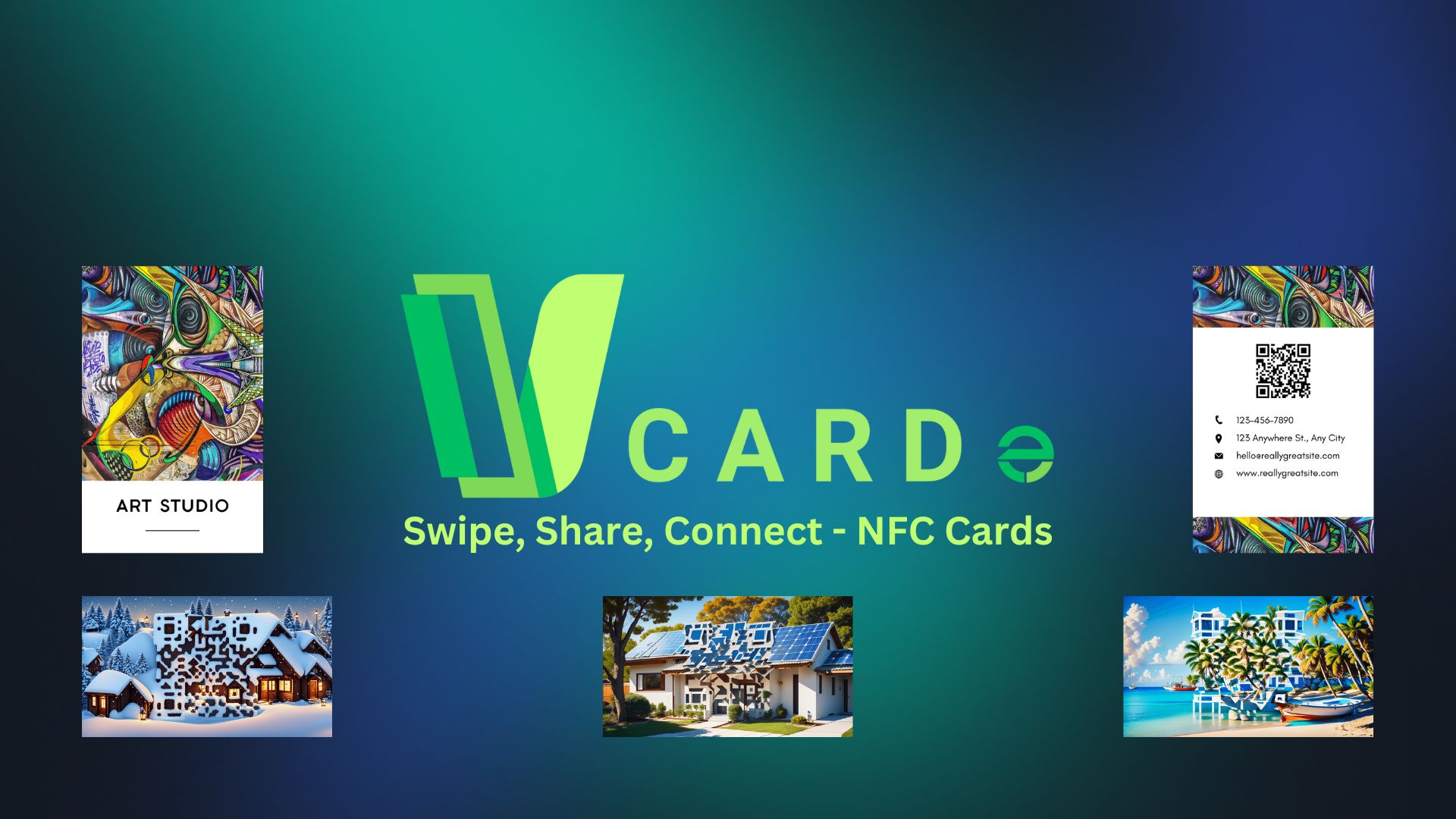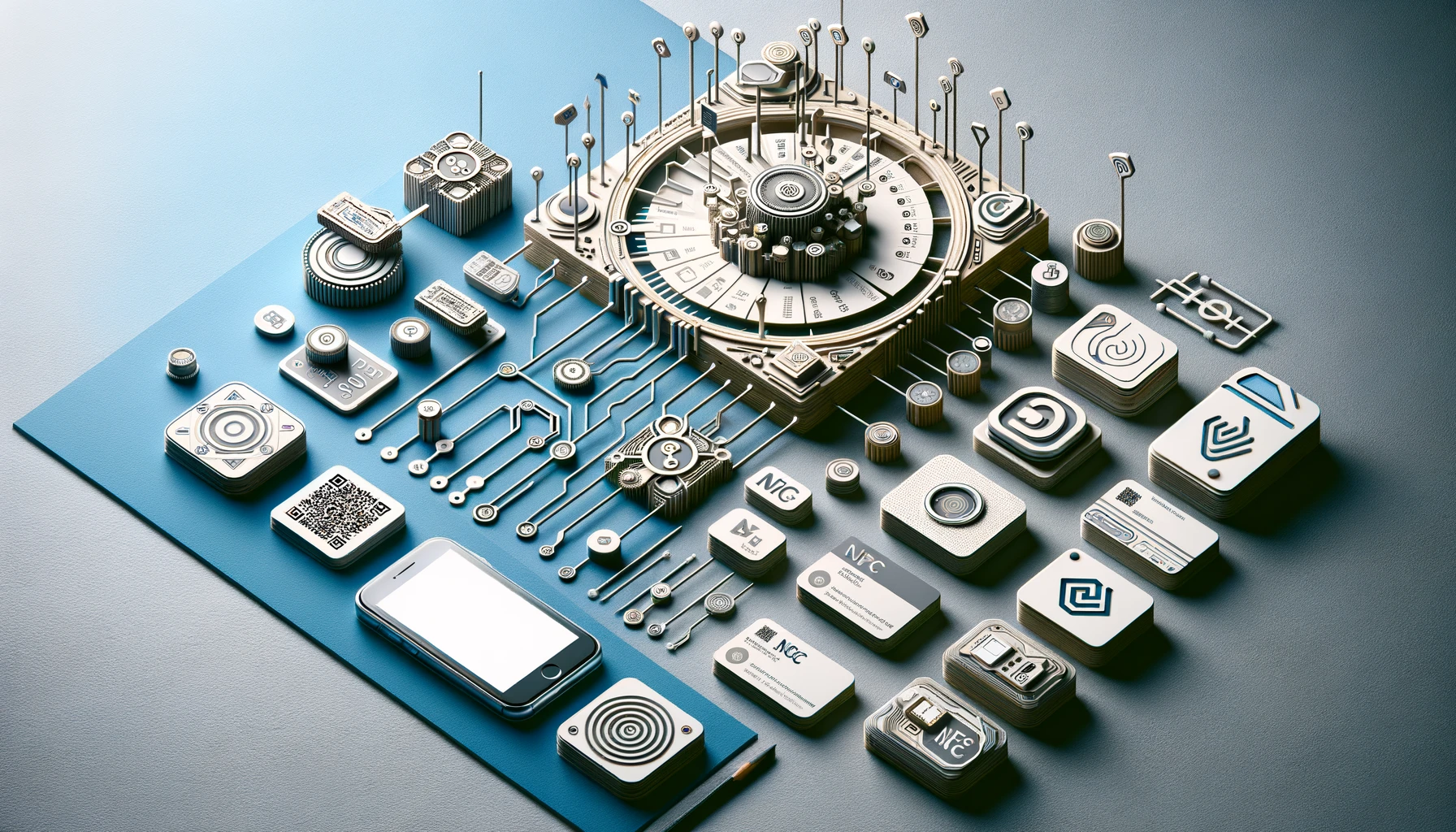How to Make a NFC Business Card: Unlocking the Power of Modern Networking
In today’s fast-paced professional world, networking is crucial, and first impressions can make all the difference. Traditionally, business cards have been the go-to tool for exchanging contact information, but with advancements in technology, **NFC business cards** have emerged as an innovative alternative. This article explores the importance of business cards, their design, and how you can take networking to the next level with **NFC proximity cards**. Whether you’re looking to create a standard card or modernize your approach with NFC technology, we’ll cover everything you need to know about crafting the perfect business card.
Why Business Cards Still Matter in Professional Networking
In the digital age, many might question the relevance of physical business cards. The truth is, **business cards** remain an indispensable tool in professional networking. While social media platforms like LinkedIn and email exchanges are efficient, nothing beats the personal touch of handing over a business card. It’s a tangible representation of your brand and identity that creates a lasting impression. When you exchange business cards, you establish a connection that transcends digital interactions, offering a personalized and professional approach that fosters trust.
Design Considerations for Your NFC Business Card
Your business card is more than just a means of sharing contact information; it’s a reflection of your brand and professional persona. When designing an NFC business card, it’s essential to consider elements that align with your brand identity, such as:
- Color Schemes: Choose colors that reflect your brand, whether bold and vibrant or professional and minimalist.
- Logo Placement: Ensure your company logo is prominent and well-placed, as it’s a key element of brand recognition.
- Design Aesthetics: The overall design should be visually appealing and professional, resonating with your target audience.
With **NFC business cards**, you also have the opportunity to integrate modern design elements like sleek minimalism or interactive features that create a dynamic impression.
Essential Information to Include
A well-designed business card should convey the essential information concisely. Ensure that the following details are included:
- Your Name: The most crucial element for personal connection.
- Job Title: This helps recipients understand your role within your organization.
- Company Name: Representing your business clearly is vital.
- Contact Information: Phone number, email address, and company website are must-haves.
- Relevant Links: If you’re using NFC technology, links to your portfolio, LinkedIn profile, or promotional content can be embedded for instant access.
The concise nature of NFC cards allows you to showcase just the most relevant details while leaving room for recipients to explore your digital content at their convenience. Explore NFC business card options here.
Choosing the Right Material
Material choice plays a significant role in the overall feel and durability of your business card. For traditional cards, opt for high-quality cardstock that is resistant to creasing or tearing. For NFC business cards, materials like plastic or metal offer a sleek, modern look while also being more durable. Additionally, choosing **eco-friendly materials** aligns with sustainable business practices, an important consideration for companies prioritizing environmental impact.
Layout and Typography
Readability is key when designing a business card. The layout should be clean and organized, with ample space between text elements to avoid clutter. Choose fonts that are professional and easy to read, with an emphasis on clarity. For **NFC business cards**, maintaining a clean design is essential since the card’s interactive features will guide recipients to further information.
Visual Elements and Unique Features
Visual elements, such as logos, graphics, or even your company’s color palette, can enhance the aesthetic of your card. However, avoid cluttering the card with too many images. Instead, focus on simplicity and align these visuals with your brand’s message. For a more memorable touch, consider incorporating features such as embossing, foil stamping, or unique shapes.
With **NFC business cards**, you can also take advantage of technology to add unique features such as:
- QR Codes: A convenient way to offer additional information like portfolios or videos without taking up too much space on the card.
- NFC Chips: Seamlessly integrated into the card, these chips allow instant digital interaction when tapped with an NFC-enabled device.
How to Make a NFC Business Card: The Future of Networking
Now that we’ve covered the basics, let’s dive into how you can **make a NFC business card** and leverage the power of modern networking tools. An NFC business card uses **Near Field Communication (NFC) technology** to share information between devices with just a tap. Here’s how to create one:
Step 1: Choose the Right NFC Card Provider
Several companies, like VCARDe, offer customizable NFC business cards. You can choose from different materials (like plastic or metal), design options, and branding elements to make your card unique. Ensure you select a provider that offers high-quality NFC chips for seamless communication.
Step 2: Customize Your NFC Business Card
Design your card by incorporating essential details, including your name, job title, company name, and contact information. The key benefit of an **NFC card** is that you can embed links to additional digital content. Whether it’s your website, LinkedIn profile, or portfolio, recipients can access everything they need with a simple tap. Check out our guide on creating NFC business cards here.
Step 3: Test and Proof Your Card
Before finalizing the design, it’s crucial to test the NFC functionality. Make sure the card works on both iOS and Android devices. Also, proofread all text to ensure there are no typos or errors. A clean, functional card is essential for a professional impression.
Step 4: Order Your NFC Business Cards
Once you’re satisfied with the design and functionality, place your order with the provider. Most companies offer bulk discounts, so consider ordering more than you need to always have extras on hand.
The Advantages of NFC Business Cards
NFC business cards offer several advantages over traditional paper cards:
- Effortless Connection: Simply tap your card on a recipient’s phone to instantly transfer your contact information, making the process quick and seamless.
- Interactive Content: Beyond sharing contact details, NFC cards can link to videos, portfolios, social media, or any other digital content, providing an enriched networking experience.
- Eco-Friendly: NFC cards eliminate the need for reprinting cards, reducing paper waste and supporting sustainable business practices.
- Security: NFC technology is secure, minimizing the risk of data loss or unauthorized access.
Proofreading and Testing
Once your **NFC business card** is ready, it’s essential to carefully proofread and test it. A small typo can leave a bad impression, so ensure that every element of the card is accurate. Test the card’s functionality to ensure the embedded NFC chip works correctly with a variety of devices.
Printing Options for NFC Business Cards
When it comes to printing, you have the option to work with professional printing services or use a DIY approach if the provider offers it. For NFC cards, professional services are highly recommended as they ensure the quality and durability of the card.
Distribution Strategies for Business Cards
Even with NFC business cards, you’ll want to master the art of distribution. Always carry a few cards with you and hand them out at relevant networking events, meetings, and conferences. Make sure to mention the NFC feature, as this will impress many tech-savvy individuals and enhance your professional interactions.
Conclusion: Elevate Your Networking Game with NFC Business Cards
In the world of professional networking, business cards continue to play a vital role. However, the rise of **NFC business cards** marks the next evolution in connectivity, offering a modern and dynamic approach to sharing information. By incorporating NFC technology into your business cards, you create an opportunity to stand out from the crowd while also offering a more engaging, eco-friendly, and secure networking experience.
If you’re ready to elevate your professional identity, embrace the power of NFC and create a business card that’s not only functional but also forward-thinking. Explore our NFC business card options at VCARDe today and watch your professional network flourish.






